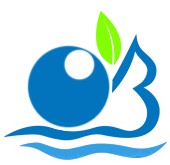Expert team of Brilliant Pearl of the Bay always are trying to prepare the best quality of Sohan as a healthy confectionery. Our R&D team is always developing our products well and quality control department is always controlling products and system carefully.
Sohan is a traditional Iranian confectionery product prepared mainly by mixing and cooking of wheat flour, sugar, malt, oil, natural flavoring additives and coloring materials.
Regarding to high consumption and popularity of Sohan as well as importance of its safety and hygienic status. Similar confection was produced with different names such as Helva, Halwa, Halvah, Halawa, Halua, Halvaa, Chalwa, etc. in other parts of the world especially in the Eastern Mediterranean countries and the Middle East. Its additive derivatives may be pistachios, saffron, almonds, cardamom and cinnamon. For Sohan preparation, at first, sugar is mixed with boiling water and saffron is solved. Then wheat flour, malt and oil are added and exposed to low temperature. When the dough spreads over a greasy tray, it is pressed with a metallic hammer to flatten and scatter nuts such as almonds and pistachios. After cooling, Sohan is put in the sealed containers.
Sohan is produced in various flatted and morsel types, such as honeyed, sesamed, almonded, pistachioed and Gaz sweet. This product is very delicious and calorie-rich compared with other traditional Iranian confections. Sohan is strongly popular souvenir which can be exported to other countries. Many illness outbreaks are attributed to food borne pathogens such as Salmonella, Staphylococcus aureus, Enterobacteriaceae, mold and yeast contamination. These food borne infection and intoxication are caused by viable microorganisms or toxins via improper and unhygienic environment, raw materials, handling and abuse timetemperature during storage and launching them to the markets. Regarding high consumption and popularity of Sohan and its safety and hygiene importance, an attempt has been devoted to determine the microbial and chemical profiles of Sohan.
This result indicated that the number of Enterobacteriaceae, S. aureus, E. coli, mold and yeast were higher than national standard limit in 51%, 19%, 10%, 55% and 40% of samples, respectively. The bacterial and fungal contamination level were significantly higher during the warm months (July, August, and September). However, chemical analysis of the samples had no statistical difference among various months.
Sohan may be contaminated due to mishandling during preparation, packaging in factories and subsequently abuse time-temperature storage at supermarkets prior to consumption. S. aureus is the causative agent of the numerous food borne diseases outbreaks that may be related to a number of virulence factors such as the heat stable enterotoxins. They can be classified as potential health hazard. Since, it has been proved that Sohan heat processing successfully diminishes S.aureus; it seems that post-processing contamination due to the presence of S. aureus on workers’ skin, mouth and nose may cause Sohan contamination.
Enterobacteriaceae family is an important fecal indicator and usually isn’t found <1 CFU/g by direct plating on EMB agar in confections (Smoot and Clifford, 2001). It can contaminate Sohan via personnel, containers, nuts and water that are consumed in factory. Oil content generally afford noticeable microbial survival, so E. coli survives in oil rich foods even for several months after manufacturing and can be recognized as a potential public health hazard.
Fungi are widely distributed in environment either in air, water, soil and dust. These are potential threats to the consumer’s health via mycotoxin production and allergic reactions.
Contamination of Sohan with molds and yeasts can be derived from raw nuts, additives and packaging material. When the hot final Sohan products become packed in sealed containers, it may lead to condense moisture and localize molds and yeasts growth in moisture proof containers. As indicated formerly, the main sources of Sohan contamination are unsanitary environments, equipment, personnel of different processing plants.
Expert team of Brilliant Pearl of the Bay are managing many factors such as personnel because Sohan is hadnd-craft confectionery and maybe personnel can contaminate Sohan samples with mishandling during each stage of production such as processing of raw materials, putting in containers and packaging.
According to our results, most of unacceptable samples by regard to microbial and fungal parameters were found in warm months (July, August and September); this finding may be due to high temperature and humidity in these months. Therefore, Brilliant Pearl of the Bay are controlling carefully all system and it is necessary to apply more hygienic conditions for manufacturing and packaging of Sohan during warm months.
In 2014, some analysis has shown, large numbers of food borne pathogens were found in Sohan samples especially in warm months in some shop stores. So, such contaminated Sohan could be a potential health hazard to consumers. Since, Sohan is a popular Iran souvenir, it is necessary for Brilliant Pearl of the Bay to employ principals of Good Hygienic Practices (GHP) and Hazard Analysis and Critical Control Points (HACCP) to minimize the risk of contamination with these pathogens.
Don’t hesitate and contact with our experts to explain you completely: “Asadi.exp.imp@gmail.com”
